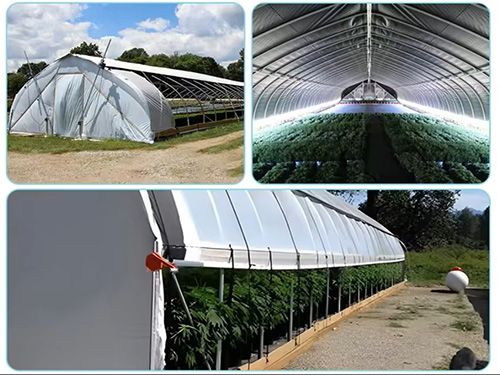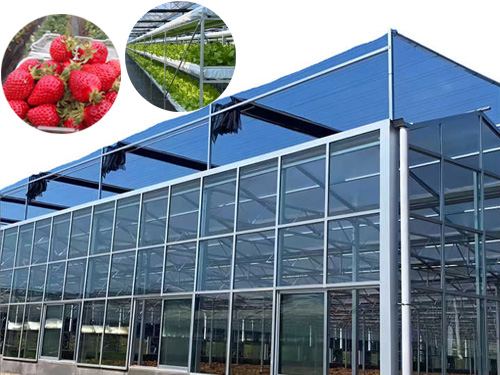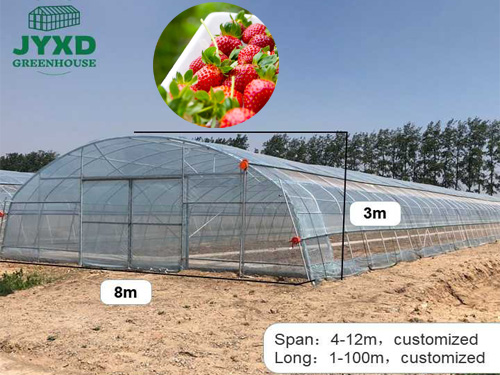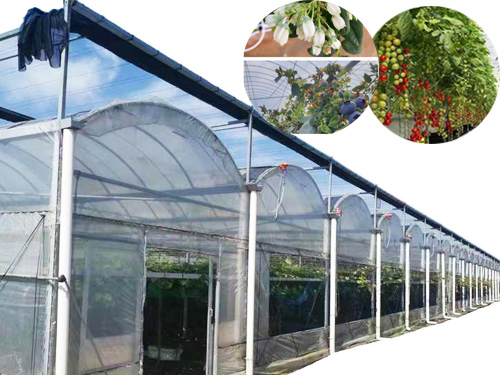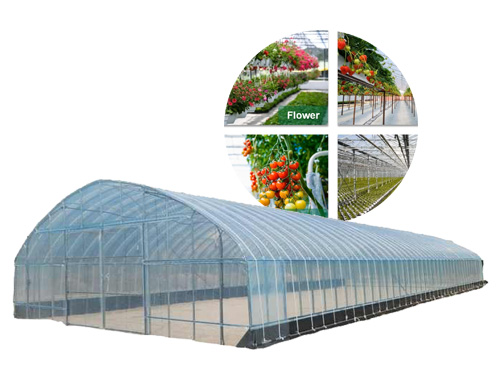NEWS DETAILS
NEWS INFORMATION
Climate-Resilient Greenhouse Design: Stormproofing & Temperature Extremes Mitigation
AUTHOR:jyxd-greenhouse DATE:2025-04-01 15:12:04 HITS:121
As climate change intensifies, greenhouse growers face increasing challenges from extreme weather events, including storms, high winds, and temperature fluctuations. Designing climate-resilient greenhouses is essential to protect crops, ensure consistent yields, and minimize operational disruptions. This article explores strategies for stormproofing greenhouses and mitigating temperature extremes, helping growers adapt to a changing climate.
Why Climate-Resilient Greenhouse Design Matters
Extreme weather events can cause significant damage to greenhouses, leading to crop loss, structural damage, and increased costs. A climate-resilient greenhouse design not only safeguards investments but also ensures year-round productivity by maintaining optimal growing conditions. By incorporating stormproofing and temperature control measures, growers can reduce risks and enhance sustainability.
1. Stormproofing Your Greenhouse
Storms, high winds, and heavy rainfall pose serious threats to greenhouse structures. Here are key strategies to stormproof your greenhouse:
Structural Reinforcement:
· strong Framing: Use durable materials like galvanized steel or aluminum for the greenhouse frame to withstand high winds.
· Anchoring Systems: Secure the greenhouse to a solid foundation using ground anchors or concrete footings.
· Windbreaks: Plant trees or install fences around the greenhouse to reduce wind speed and protect the structure.
Robust Covering Materials:
· Polycarbonate Panels: Opt for multiwall polycarbonate sheets, which are impact-resistant and provide excellent insulation.
· Reinforced Plastic Films: Choose UV-stabilized, tear-resistant plastic films for added durability.
· Shade Nets: Install shade nets to protect against hail and reduce wind pressure.
Drainage and Water Management:
· Gutters and Downspouts: Ensure proper installation to divert rainwater away from the greenhouse.
· Raised Beds: Use raised planting beds to prevent waterlogging during heavy rainfall.
· French Drains: Install drainage systems around the greenhouse to manage excess water.
2. Mitigating Temperature Extremes
Temperature fluctuations can stress plants and reduce yields. Here’s how to design a greenhouse that maintains stable temperatures:
Insulation:
· Double-Layered Covering: Use double-layered polycarbonate or plastic films to improve insulation.
· Thermal Blankets: Install retractable thermal blankets to retain heat during cold nights.
· Insulated Foundations: Insulate the base of the greenhouse to prevent heat loss.
Ventilation and Cooling:
· Ridge Vents: Install automatic ridge vents to release hot air and improve airflow.
· Evaporative Cooling: Use evaporative cooling pads or misting systems to lower temperatures during heatwaves.
· Shade Systems: Deploy shade cloths or retractable shades to reduce solar heat gain.
Heating Systems:
· Energy-Efficient Heaters: Use propane or electric heaters with thermostats for precise temperature control.
· Geothermal Heating: Explore geothermal systems for sustainable heating solutions.
· Heat Retention: Use thermal mass materials like water barrels or concrete floors to store and release heat.
3. Advanced Technologies for Climate Resilience
Modern greenhouses can leverage advanced technologies to enhance climate resilience:
· Automated Climate Control: Use sensors and automation to monitor and adjust temperature, humidity, and ventilation in real-time.
· Weather Monitoring Systems: Install weather stations to track external conditions and prepare for extreme events.
· Retractable Roofs: Invest in greenhouses with retractable roofs to adapt to changing weather conditions.
· Energy Curtains: Use energy-saving curtains to insulate the greenhouse and reduce heating costs.
4. Benefits of Climate-Resilient Greenhouse Design
Investing in a climate-resilient greenhouse offers numerous advantages:
· Crop Protection: Safeguard plants from extreme weather, ensuring consistent yields.
· Cost Savings: Reduce repair and replacement costs by minimizing storm damage.
· Energy Efficiency: Optimize heating, cooling, and ventilation to lower energy consumption.
· Sustainability: Enhance resource efficiency and reduce environmental impact.
5. Case Studies: Climate-Resilient Greenhouses in Action
Stormproof Greenhouse in Florida:
· Challenge: Frequent hurricanes and high winds.
· Solution: Reinforced steel frame, polycarbonate panels, and a robust anchoring system ensured the greenhouse withstood a Category 3 hurricane.
Temperature-Controlled Greenhouse in Arizona:
· Challenge: Extreme heat and temperature fluctuations.
· Solution: Evaporative cooling systems, shade nets, and automated ventilation maintained optimal growing conditions.
Insulated Greenhouse in Canada:
· Challenge: Harsh winters and sub-zero temperatures.
· Solution: Double-layered polycarbonate, thermal blankets, and geothermal heating kept the greenhouse operational year-round.
6. Best Practices for Climate-Resilient Design
To maximize the effectiveness of your climate-resilient greenhouse, follow these best practices:
· Site Selection: Choose a location with natural windbreaks and good drainage.
· Regular Maintenance: Inspect and maintain the structure, covering materials, and systems regularly.
· Emergency Plans: Develop contingency plans for extreme weather events, such as securing loose items and reinforcing weak points.
· Continuous Improvement: Stay updated on new technologies and design innovations to enhance resilience.
Conclusion
Climate-resilient greenhouse design is essential for adapting to the challenges of extreme weather and temperature fluctuations. By incorporating stormproofing measures, temperature control strategies, and advanced technologies, growers can protect their crops, reduce costs, and ensure year-round productivity. Investing in a climate-resilient greenhouse not only safeguards your operation but also contributes to a more sustainable future.
For more expert tips and high-quality greenhouse solutions, visit our website and take your cultivation practices to the next level. Let’s grow smarter and cultivate a greener future together!
![]()
Meta Description: Learn how to design a climate-resilient greenhouse with storm proofing and temperature control strategies. Protect your crops from extreme weather and ensure year-round productivity.
Hebei Juyou Xinda Greenhouse Facilities Co.,Ltd.
Copyright © 2024-2025 https://www.jyxd-greenhouse.com. All Rights Reserved Hebei Juyou Xinda Greenhouse Facilities Co.,Ltd.Copyright





 Current Location:
Current Location:


